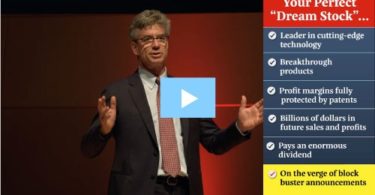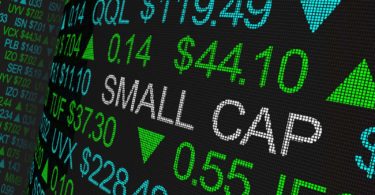Company Overview: Antero Resources (NYSE: AR) is a leading independent natural gas and NGL producer operating in the Appalachian Basin (Marcellus and Utica shales). The company has built a large acreage position with over 20 years of core drilling inventory, and it benefits from firm transportation agreements that deliver its gas to premium markets (including LNG export corridors) ([1]) ([2]). After a transformative deleveraging in recent years, Antero now emphasizes capital discipline – maintaining flat production (~3.3–3.4 Bcfe/d) while prioritizing free cash flow generation and shareholder returns over volume growth ([2]) ([2]). This strategy, along with improving price realizations for natural gas and NGLs, positions Antero at a potential inflection point where its “next move” – in capital return or strategic direction – could significantly impact investor portfolios. Below, we dive into Antero’s dividend policy, leverage, valuation, and key risks to understand the setup for what comes next.
Dividend Policy & Shareholder Returns
No Dividend – Focus on Buybacks: Antero Resources has never paid a dividend on its common stock to date ([3]), a notable point given many energy peers have initiated payouts. The current dividend yield stands at 0.0% ([4]). Management has instead chosen to return capital via share repurchases. In 2022 – a year of strong commodity prices – Antero repurchased 27.4 million shares (roughly 9% of shares outstanding) for about $940 million, while concurrently reducing debt by a similar amount ([5]). This aggressive buyback amounted to returning roughly 50% of free cash flow to shareholders, consistent with the company’s capital return target ([5]) ([5]). In fact, since initiating buybacks in early 2022, Antero has repurchased over $1.0 billion of stock (roughly 10% of outstanding shares) ([6]).
Safe Cash Plan
Learn the steps on page 71 to protect liquid savings.
Gold & Silver
Hidden chapter: The Perfect Gold Portfolio.
AI Crash Playbook
What to do the morning the market hollers.
Capital Return Outlook: With dividends off the table for now, investors are eyeing whether Antero might initiate a payout or ramp up buybacks as free cash flow surges. The company’s latest guidance projects a dramatic step-up in free cash flow – over $1.6 billion in 2025 versus just $73 million in 2024 ([2]) ([2]) – thanks to higher expected gas/NGL prices and lower capital spending. Management has signaled plans to allocate ~$500 million of this toward debt reduction in 2025, leaving a substantial cash surplus that could fund shareholder returns via dividends or further repurchases ([2]). However, Antero has not yet detailed a specific distribution plan for this excess cash ([2]). This open question – whether the company will finally institute a dividend or simply expand its buyback authorization – is a key point for investors. Any shift in capital return policy (“the next move”) could be a catalyst for the stock, by broadening its appeal (e.g. to yield-focused investors) or accelerating per-share cash flow growth through buybacks.
Leverage, Debt Maturities & Coverage
Reduced Leverage: Antero’s balance sheet has undergone a massive improvement over the past few years. From 2019 through 2022, the company slashed total debt by over $2.5 billion ([5]). By year-end 2022, long-term debt was $1.18 billion ([5]) – down from more than $4 billion at its 2019 peak – and net debt-to-EBITDAX dropped to just 0.4× (trailing) ([1]). Even after a challenging 2023 (with weaker gas prices), leverage remained moderate: net debt/EBITDAX was ~0.5× in early 2023 ([6]) and under 1× at end of 2023. This low leverage provides ample interest coverage and financial flexibility. For example, in Q3 2022 Antero’s EBITDA covered its interest expense more than 10× over, as net debt/EBITDAX was only 0.4× ([1]) – a testament to the company’s sturdier balance sheet.
Debt Profile and Maturities: Antero carries no near-term bond maturities. Its outstanding notes include $97 million of 8.375% senior notes due 2026, $407 million of 7.625% notes due 2029, and $600 million of 5.375% notes due 2030 ([3]). The last of its convertible notes were fully converted to equity in 2024 (eliminating that debt entirely) ([3]) ([3]). In mid-2024, Antero upsized and extended its revolving credit facility into a new unsecured credit facility maturing July 2029 ([3]). As of year-end 2024, roughly $393 million was drawn on this revolver ([3]), leaving over $1.2 billion in liquidity. With no significant debt due until mid-2026 and strong free cash flow expected, Antero is positioned to comfortably service and even retire debt early. In fact, management intends to pay down ~$500M of debt in 2025 from free cash flow ([2]), which would drive leverage even lower. All told, Antero’s interest burden is well-covered – its fixed-interest senior notes (~$1.1B principal) carry weighted rates of 5.4%–8.4% ([3]), implying annual interest on long-term debt roughly in the ~$80–90 million range, easily covered by operating cash flow (for context, Antero generated $312 million of operating cash in Q4 2023 alone ([7])). The company was in full compliance with all debt covenants as of year-end, including restrictions on dividends or repurchases, which are now largely flexibility given its strong financial metrics ([3]) ([3]).
Coverage Ratios: From a solvency standpoint, Antero’s interest coverage and fixed-charge coverage are very robust. Even in the soft commodity environment of 2023, EBITDAX was in the $1.2–1.3 billion range (full-year), versus interest expense likely around $100 million – a coverage ratio on the order of 12×. During boom times like 2022, coverage was even higher: for example, that year’s EBITDA exceeded interest by roughly 20×, and free cash flow (after capex) was sufficient to cover all obligations and fund buybacks + debt paydowns simultaneously ([1]) ([5]). Antero’s reinvestment rate has also come down; its 2023 capital expenditures were fully funded by cash from operations, and in 2024 the maintenance-level capex (~$725–800M guidance) is designed to be lower, allowing positive free cash generation even at subdued gas prices ([2]) ([2]). All these factors point to strong financial coverage – the company can meet debt service easily and has ample cushion to maintain operations and shareholder returns under a range of commodity scenarios.
Valuation and Financial Metrics
Current Valuation: Antero’s equity has pulled back from 2022 highs, recently trading around the mid-$20s per share (as of September 2025). At this price, the stock looks cheap on a cash flow basis. Antero’s trailing free cash flow yield is over 13% ([8]), far above the Oil & Gas industry median ~2.6% ([8]). In other words, the market is valuing Antero at roughly 7.5× trailing FCF – a steep discount relative to peers and to the broader market. This partly reflects the cyclical trough in earnings (trailing 12-month EPS was only $0.26, yielding a high P/E ~100× ([9]) due to low 2023 gas prices). However, the forward outlook implies a rapid rebound in earnings and cash flows. Based on consensus and company projections for 2025, Antero’s forward P/E drops to single-digits, and its EV/EBITDA is likely ~4–5× – a valuation closer to deep-value than to a company on the cusp of record free cash generation. For instance, Antero itself forecasts over $1.6 billion in free cash flow in 2025 ([2]). If achieved, that would equate to ~20% of its current market cap in FCF, underscoring the disconnect between the company’s cash flow potential and its stock price. Even after a strong run off 2024 lows (AR stock doubled in the year leading into May 2025) ([2]), the stock trades near 0.5× NAV (net asset value) by some sell-side estimates, and carries an implied value per flowing Mcf or per unit of reserves that is at the low end of Appalachian E&P peers (like EQT, Coterra, Range Resources). Antero also owns a 31% equity stake in Antero Midstream (NYSE: AM) – worth roughly $2.7 billion at current prices – which provides ~$125 million of annual dividend income to Antero ([3]) ([3]). Adjusting for this valuable midstream stake (and its cash flows) makes AR’s valuation even more compelling, as investors are effectively getting the E&P business at an even lower multiple when the midstream piece is backed out.
Comparables: Pure-play natural gas producers often trade at discounts due to volatility, but Antero’s metrics still look attractive relative to peers. For example, its FCF yield (~13%) is among the highest in the U.S. E&P space ([8]). Larger peer EQT Corp (the biggest U.S. gas producer) trades at a lower trailing FCF yield and carries higher leverage. Mid-cap peers like Range Resources (RRC) or Southwestern Energy (SWN) have minimal (or no) free cash flow at recent gas prices, whereas Antero remained free cash flow positive in 2023 and is set to generate gusher-like FCF in 2025. On a EV/EBITDA basis, AR’s ~10× multiple using depressed TTM EBITDA ([10]) should compress to mid-single-digits with forward improvements – competitive with, if not cheaper than, peers once adjusted for production mix (Antero’s liquids production grants it a pricing uplift). It’s also worth noting Antero’s hedging strategy: the company opportunistically removed hedges in early 2023 to increase upside to future prices ([6]), then later added new hedges extending into 2026 once prices were more favorable ([2]) ([2]). This dynamic approach to hedging aims to protect baseline cash flows (supporting valuation stability) while retaining upside – something that can differentiate AR from peers that either hedge heavily (capping upside) or not at all (adding risk). Overall, the valuation case for Antero appears strong, assuming the commodity outlook materializes: the stock offers a combination of asset value, cash yield, and growth optionality that could drive upside. The key question is whether management’s next capital allocation moves (e.g. initiating a dividend, accelerating buybacks, or perhaps M&A) will act as catalysts to unlock this value.
Key Risks and Red Flags
Commodity Price Volatility: The foremost risk to Antero is natural gas price volatility. Gas markets have been extremely cyclical – Antero’s financial fortunes illustrate this, swinging from record profits in 2022 (when Henry Hub gas averaged ~$6+) to near-breakeven in 2023 (when prices fell below $3). A sustained low-price environment would compress Antero’s margins and could even turn free cash flow negative if prices drop below breakeven levels. The company’s sensitivity is significant: roughly 64% of Antero’s production is dry natural gas ([11]) ([11]), so even though it benefits from liquids, a major gas glut or a warm winter could hurt revenues. Antero does hedge portions of output (for 2025 it remains mostly unhedged to capture upside, but it has 2026 collars protecting a floor around $3.07/MMBtu) ([2]). Nonetheless, investors in AR must be comfortable with commodity-driven earnings swings. The flip side is that any spike in gas (e.g. due to a cold winter or surging LNG demand) could be a boon – so AR carries upside risk as well.
Appalachian Infrastructure Constraints: Pipeline capacity and regional basis differentials are ongoing concerns for Marcellus/Utica producers. Antero has a large firm transportation portfolio to ship gas out of Appalachia to better-priced markets ([1]) ([3]). However, if regional takeaway becomes constrained (for instance, if projects like the Mountain Valley Pipeline face issues or if production grows without new pipelines), local gas prices could suffer. While Antero’s firm contracts shield it from basis blowouts to a degree, those contracts also carry fixed fees – meaning AR must pay demand charges even if it can’t fully utilize the capacity ([3]). Antero acknowledges that lack of new pipeline infrastructure could limit its ability to grow production or even necessitate curtailments ([3]). This risk is somewhat mitigated by Antero’s maintenance-level drilling plan (flat output), which is sized to existing takeaway capacity. Still, investors should monitor developments in Appalachian gas infrastructure and regulatory approvals, as they directly impact Antero’s realized pricing and growth optionality.
Regulatory and Environmental Risks: Operating in fossil fuels, Antero faces environmental regulation at multiple levels. Strict methane emissions rules, drilling permitting delays, or bans on fracking in certain areas could increase costs or restrict Antero’s operations. For example, federal or state rules govern water usage and disposal in drilling, emissions controls, and habitat protection that can limit activities on certain acreage ([3]) ([3]). Pennsylvania and West Virginia (Antero’s core states) have generally been industry-friendly, but political shifts could introduce new hurdles. There’s also ESG pressure: Antero has made progress on emissions (targeting net-zero Scope 1 & 2 by 2025) ([1]), yet any missteps (spills, leaks, etc.) could invite fines or reputational damage ([3]). Additionally, climate change policies aiming to reduce natural gas usage (e.g. incentivizing renewables or opposing new gas power plants) represent a longer-term demand risk. Antero’s significant NOLs (over $0.6B federal and $1.9B state) help shield it from cash taxes for now ([3]) ([3]), but any changes in tax law (like a minimum corporate tax or increased methane tax) could erode cash flows.
Operational and Market Risks: On the operations front, Antero must execute on its drilling program to hold production flat with fewer rigs – any operational slip-ups (e.g. drilling problems, underperformance of new wells) could affect volume and cost structure. Fortunately, 2023 saw record drilling efficiencies (e.g. laterals >17,000 feet in Q4) ([7]) ([12]) and reduced base decline rates, which bode well for hitting targets. Another consideration is product mix pricing: about 36% of Antero’s output is liquids (NGLs and a small oil cut) ([7]). NGL prices can be volatile and are linked to crude oil and petrochemical demand. While lately Antero enjoyed strong NGL realizations (C3+ NGL price up to $41/Bbl in Q3 2024) ([11]), a downturn in oil or ethane/polymer markets could compress that advantage. Cost inflation is a lesser but present risk – e.g. steel tubular goods, labor, and services. Management noted some relief in late 2023 (drilling costs rolling over) ([6]), yet things like new steel tariffs could add $5–10 million in annual costs ([2]). Finally, financial risks are relatively low given strong liquidity, but if gas prices unexpectedly crashed and stayed low, Antero might choose to curtail returns or even borrow to sustain operations (much as it had to raise capital through a volumetric production payment financing (“Martica” VIE) and a convertible note during the 2020 downturn). That 2020 ORRI transaction (with Sixth Street Partners) indicates the company’s creativity in securing liquidity, but also serves as a reminder of how tough conditions can get in a gas bust. The Martica VIE still exists (holding overriding royalty interests on some Antero wells), though by April 2023 the bulk of those ORRIs had been satisfied or reverted ([3]) ([3]). Going forward, such measures are less likely given today’s solid balance sheet, yet it’s a backdrop risk for worst-case scenarios.
Governance and Other: There are no glaring governance red flags – Antero’s management is seasoned, with co-founder Paul Rady still at the helm (recently, an independent director was appointed non-executive chairman, a move that can be seen as governance-friendly) ([13]) ([13]). One point to watch is insider ownership and incentives: insiders own a meaningful stake and have large equity awards, so their interests are largely aligned with shareholders (focused on stock performance). That said, compensation is tied partly to metrics like debt reduction and TSR, which has encouraged the aggressive deleveraging and buybacks. A potential conflict could be Antero’s relationship with Antero Midstream; AR relies on AM for gathering/processing services and also benefits from AM’s dividends. Transactions between them (e.g. fee rebates or operational coordination) need to remain arm’s-length. The 2019 simplification greatly aligned interests (AR became AM’s largest shareholder) ([14]) ([14]), but investors should ensure AR isn’t subsidizing AM or vice versa in a way that hurts minority shareholders. So far, AR has actually benefited via rebates when throughput targets are met, and AM’s growth supports AR’s takeaway needs, so the symbiosis appears positive.
Open Questions and What Could Change Your Portfolio
With Antero on the cusp of generating significant excess cash, the key open questions revolve around capital allocation and strategic direction. First and foremost: Will Antero initiate a shareholder dividend? Thus far, management has favored buybacks (arguing the stock has been undervalued and that flexible returns are prudent in volatile gas markets). However, as debt nears target levels and cash piles up, a modest base dividend could be a natural “next move.” It would mark a policy shift that could attract income-focused investors and signal confidence in stable future cash flows. The company’s 2025 guidance left the door open to this, explicitly mentioning the potential for dividends or continued repurchases with the surplus free cash flow ([2]). Any announcement on this front – for example, a new dividend initiation or a large special dividend – could re-rate the stock and “change your portfolio” by providing a new return stream.
Another question: How will Antero deploy its swelling free cash flow beyond 2025? Even after the planned $500M debt paydown in 2025, Antero could have ~$1+ billion remaining that year. If gas prices stay robust into 2026, annual FCF could stay elevated. The company has hinted at returning 50%+ of free cash flow to shareholders as a framework ([5]) ([5]). Will it formalize this into a dividend+buyback program (like some oil peers have done with fixed + variable dividends)? Or will it stick to opportunistic buybacks depending on where the stock trades? The consistency of capital returns is a point of debate – some investors prefer the certainty of a dividend, while others are fine with buybacks if they’re done at value-accretive prices. Clarity from management on a long-term capital return policy could be a catalyst.
Growth vs. Return: Antero’s current stance is maintenance mode on production. But if gas demand rises (e.g. new LNG export capacity ramping by 2025–2026) ([12]) ([2]), will Antero consider production growth again? The company has a deep inventory and top-tier acreage; arguably it could profitably grow output if prices justify it. However, growth would require higher capital spending and could temper near-term free cash flow. Management seems disciplined, but this remains an open strategic question: will AR stick to its no-growth pledge or cautiously increase volumes to capture market opportunities (especially given its firm transport access to LNG hubs)? The resolution of this will influence long-term projections and how investors value the stock (growth investors vs. yield/value investors). So far, Wall Street has been “generally positive” on Antero’s commitment to efficiency and cash generation ([2]), but some analysts have voiced concerns about the flat production profile not appealing to growth-oriented shareholders ([2]). Any hint of a pivot – e.g. adding a rig or guiding to production growth – could alter the narrative (either positively, if done in a high-price environment, or negatively, if seen as undisciplined).
Use of Midstream Stake: Another open item is what Antero will eventually do with its 31% stake in Antero Midstream (AM). That holding is strategic (ensuring alignment with midstream capacity) and provides ~$125M in annual cash via dividends ([3]). Some investors wonder if Antero might monetize or spin off this stake in the future to unlock value. For instance, selling a portion of AM shares could raise cash to fund more buybacks of AR stock or a special dividend. Alternatively, AR could distribute AM shares as a dividend in-kind to its shareholders. There are no indications of an imminent move here, but as Antero’s upstream business generates cash independently, the rationale for holding midstream equity long term might be revisited. Any decision on this front would have portfolio implications (e.g. if AR shareholders suddenly receive AM shares or if AR’s balance sheet gets a cash infusion from a sale).
M&A Prospects: Given the ongoing consolidation in the oil & gas sector, one cannot ignore the possibility of M&A. Antero could be an acquisition target for a larger player looking to dominate Appalachian gas – its low debt and valuable acreage make it attractive. Conversely, Antero could itself look at bolt-on acquisitions of nearby acreage or even corporate deals if valuations are compelling (the company’s mention of adding 50+ drilling locations via organic leasing in Q1 2023 shows it’s still interested in inventory renewal ([6])). While nothing concrete has surfaced, a strategic move (buying or being bought) would certainly “change your portfolio” outcome for AR investors. Any such considerations will hinge on market conditions and whether Antero’s share price adequately reflects its value (management that believes the stock is undervalued might prefer to buy back shares than companies).
Conclusion: Antero Resources today represents a transformed natural gas pure-play – one with no dividend (yet), very low debt, high free cash flows, and disciplined growth. Its valuation is undemanding and pricing in a lot of caution, which means if the company’s next moves (be it initiating a dividend, upping buybacks, or staying the course in a higher gas price environment) are favorable, there could be substantial upside. Conversely, the volatility of the gas market always counsels caution. For investors, the risk/reward appears asymmetric: Antero has shored up its balance sheet to survive downcycles, yet remains fully levered to any upcycle. The coming 12-18 months – with LNG demand rising and Antero potentially shifting its capital return strategy – could be pivotal. In short, Antero’s next move – whether a new dividend or another bold strategic step – is one to watch closely, as it may significantly alter the return profile of AR stock and thus the fortunes of portfolios exposed to it. The groundwork has been laid; now it’s up to execution and prudent decisions by management to unlock the value that patient shareholders have been awaiting.
Sources: First-party filings and investor materials were used for factual data on Antero’s financials, debt, and policies. Key sources include the 2022 and 2023 earnings releases and 10-K (for debt details and risk factors) ([3]) ([5]) ([3]), as well as Antero’s recent guidance presentation outlining 2025 free cash flow projections ([2]). Authoritative financial data services and media were referenced for market and valuation metrics (e.g. GuruFocus for FCF yield and industry comparisons) ([8]). All inline citations above link to the relevant source material for verification.
Sources
- https://anteroresources.com/news-events/press-releases/detail/223/antero-resources-reports-third-quarter-2022-results-and
- https://in.investing.com/news/company-news/antero-resources-2025-guidance-slides-projecting-16b-free-cash-flow-flat-production-93CH-4802987
- https://investors.anteroresources.com/sec-filings-email/content/0001558370-25-000864/ar-20241231x10k.htm
- https://macrotrends.net/stocks/charts/AR/antero-resources/dividend-yield-history
- https://anteroresources.com/news-events/press-releases/detail/225/antero-resources-announces-fourth-quarter-2022-results
- https://prnewswire.com/news-releases/antero-resources-announces-first-quarter-2023-financial-and-operational-results-301808780.html
- https://anteroresources.com/investors/press-releases/detail/233/antero-resources-announces-fourth-quarter-2023-results
- https://gurufocus.com/term/fcf-yield/AR
- https://finance.yahoo.com/quote/AR/
- https://gurufocus.com/term/ev2ebitda/AR
- https://nasdaq.com/articles/antero-resources-q3-earnings-miss-estimates-lower-production
- https://prnewswire.com/news-releases/antero-resources-announces-fourth-quarter-2023-results-year-end-reserves-and-2024-guidance-302062277.html
- https://marketscreener.com/quote/stock/ANTERO-RESOURCES-CORPORAT-14491401/news/Antero-Resources-Company-Presentation-46636053/
- https://anteroresources.com/news-events/press-releases/detail/103/antero-resources-announces-simplified-midstream-corporate
For informational purposes only; not investment advice.




